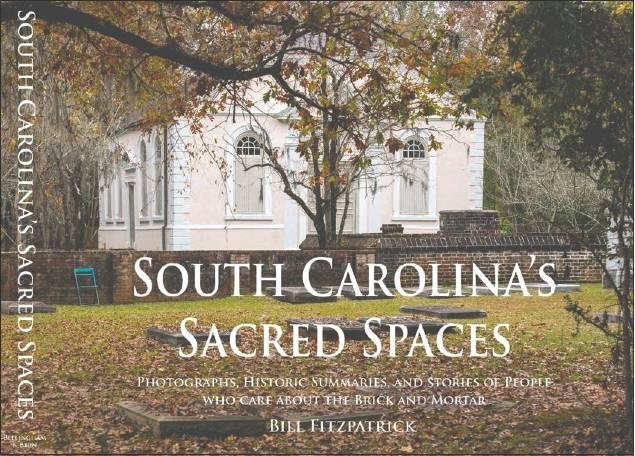Our state’s many endangered places of worship
Lexington County Library System Director Kelly Poole this month recommends Book Club readers consider “Sacred Spaces.” SC author Bill Fitzpatrick’s photographic tour of our state’s many …
This item is available in full to subscribers.
Subscribe to continue reading. Already a subscriber? Sign in
Get 50% of all subscriptions for a limited time. Subscribe today.
Please log in to continueNeed an account?
|
Our state’s many endangered places of worship
Lexington County Library System Director Kelly Poole this month recommends Book Club readers consider “Sacred Spaces.” SC author Bill Fitzpatrick’s photographic tour of our state’s many endangered historic churches, graveyards and other sacred places.
This year, I had the pleasure of hearing local author Bill Fitzpatrick share his experiences while writing Sacred Spaces.
Fitzpatrick not only is the author but also the photographer of this wonderful depiction of historic churches, temples and synagogues throughout South Carolina.
Fitzpatrick, who lives in Greenville, moved around with his family when he was young and arrived in Columbia to attend the University of South Carolina.
He has spent most of his professional life developing software for chain restaurant cash registers.
He bicycled across the country, self-published a book about his adventure and wrote a series of books about historic sites.
In 2011, Fitzpatrick began a journey to photo sanctuaries in the upstate. His passion to learn and preserve these histories led him to expand his research and capture our reverence for such spaces throughout the state.
He quickly realized there was more interest than just from friends and family.
He even points out that if South Carolina has a Barbecue Trail, then shouldn’t it have a Church Trail? After sitting down for a cup of coffee with Mike Bedenbaugh of Preservation South Carolina, it was clear to both that Fitzpatrick had captured something breathtaking and that the “history of our state could be told through the collective stories of these sacred spaces”.
The photo history includes 69 sanctuaries throughout South Carolina and it’s just shy of 250 pages.
I’m primarily a fiction reader and some of my favorite books use the sense of “place” as a character. Think Where the Crawdads Sing or Hillbilly Elegy, or any of Pat Conroy’s works. They make you love pluff mud.
I was surprised to be so taken aback by Sacred Spaces at first but I quickly realized the title of Fitzpatrick’s work says it all.
He is not only a photographer but an amazing storyteller. He masterfully captures the essence of each space, relaying hope and inspiration through each story.
The book begins with a series of “Dissenters” and moves through our Anglican Heritage, Reformation period and the tenacity of African-American faith.
It culminates with a chapter on epic figures such as John Grimke Drayton, Richard Furman and Bishop John England and ends with a chapter of churches on the National Register including one close to home, St. John’s Lutheran Church (Pomaria), thought to be the oldest frame Lutheran Church in SC.
Throughout the book, Fitzpatrick artfully depicts the community whether past or present of each sanctuary. Many congregations began in times of trial or turmoil and Fitzpatrick unveils the story behind each.
Many of the spaces are on the National Register of Historic Places or contributed to a Historical District.
Several churches have had generations of caretakers who have faithfully dedicated their time to preserve the buildings that no longer have active congregations.
Fitzpatrick met with several and captures their stories of passion, dedication, and the perseverance of those who often offer their own funds to add historical markers at these sites.
Fitzpatrick gave an author talk at several libraries this summer and I can promise you his storytelling is as artistic as his photos.
One of the many treasures that he highlights is The Music Hall Evangelical Lutheran Church (Lexington County) which stemmed from St. Paul’s Evangelical Lutheran Church because the congregation wished to include more music in their services.
If you wish to hear more of his stories and buy the book, visit https://savingsacredspaces.org/ or lexcolibrary.com .
Other items that may interest you










Comments
No comments on this item Please log in to comment by clicking here